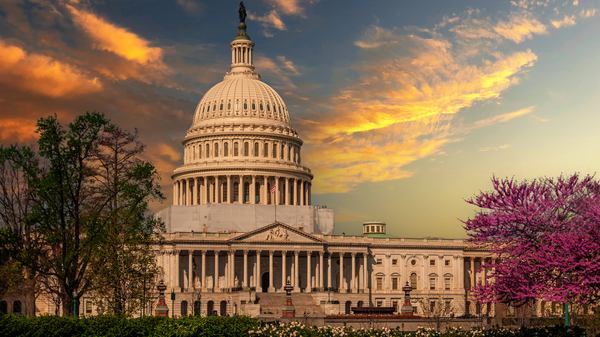US Senate Approves Permanent DST Bill
The US Senate has passed a bill allowing permanent Daylight Saving Time (DST) in all US states.
Update March 2025: Will the US Abolish Clock Changes?
On March 15, 2022, the U.S. Senate passed the Sunshine Protection Act of 2021, but it stalled in the House of Representatives. In 2025, the Sunshine Protection Act of 2025 was introduced in the House again.

The Sun is setting on Daylight Saving Time (DST) in the US. The Senate has unanimously voted in favor of permanent DST. Capitol Building in Washington D.C.
©iStockphoto.com/OlegAlbinsky
On March 15, 2022, the US Senate surprisingly and unanimously passed the Sunshine Protection Act. The announcement comes only two days after most of the US set their clocks forward one hour for DST.
If the bill passes the next stage, permanent DST will be the new standard time in all but two states in the US.
States that don’t have DST, including Hawaii and most of Arizona, may choose the original standard time.
Effective in 2023
If the bill passes, states that use DST will not fall back to standard time but remain on permanent DST starting November 5, 2023.
This move might have happened in November this year, but the date was set to 2023 to give sectors with strict timetables, like airlines and travel industries, time to prepare.
Needs to Be Signed into Law
After the unanimous passing of the bill in the Senate, the legislation heads next to the House of Representatives. If passed in that chamber, it ends up on President Joe Biden’s desk to be signed into law.
Since 1966, most Americans have been springing forward one hour on the second Sunday in March. If the Sunshine Protection Act is signed, the Sun will set on the tradition.
The current law has only allowed states to opt out of DST, not to follow it year-round.
Originally Florida Bill
The bill is a win for Florida’s Senator Marco Rubio, one of its sponsors. He brought it to the Senate floor advocating brighter evenings and the boost it would give the economy—he has regularly reminded the federal government of the perks of permanent DST.
“The good news is that we can get this passed. We don’t have to keep doing this stupidity anymore. Why we would enshrine this in our laws and keep it for so long is beyond me,” Rubio said on the Senate floor.
Four years ago, at the end of March 2018, Florida Governor Rick Scott signed off on the bill dubbed the “Sunshine Protection Act,” sending it to Congress.
Many States Want to Remove DST
18 states have enacted legislation or passed regulations for permanent DST:
- 2021: Alabama, Georgia, Minnesota, Mississippi, and Montana.
- 2020: Idaho, Louisiana, Ohio, South Carolina, Utah, and Wyoming.
- 2019: Delaware, Maine, Oregon, Tennessee, and Washington.
- 2018: Florida and California.
This list has been updated to reflect the current situation.
Similar Situation in Europe
Most of Europe starts DST on March 27, 2022. However, frustrations with the DST clock changes have led the European Parliament to draft a law to remove DST in the European Union permanently.
The removal of DST was initially planned for 2021, but it did not happen. In 2020 and 2021, Europe, like the rest of the world, was busy handling the health and economic effects of Covid-19.
Negotiations have still not started in the European Council.
Europe’s time zones and DST schedule
Not All US States Use DST
Currently, almost all US states have yearly clock changes. The only exceptions are Hawaii and Arizona.
Hawaii observes Hawaii Standard Time (HST) all year.
Most of Arizona observes Mountain Standard Time (MST) year-round, except the Navajo Nation. This is because its territory extends into Utah and New Mexico—both states that observe DST.
Indiana decided to join the national DST regime in 2006 after abstaining from changing its clocks since 1970.